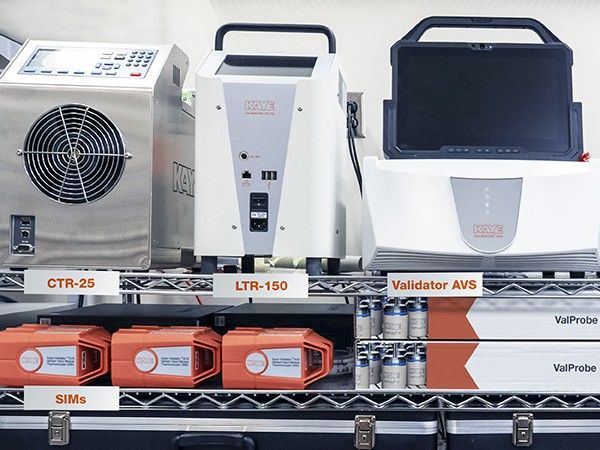Warehouse mapping is a crucial element in modern supply chain management. It involves the strategic layout and organization of a warehouse to optimize space, streamline operations, and improve overall efficiency. This practice has become increasingly important as businesses aim to meet the demands of rapid order fulfillment and high customer expectations. In this article, we will explore the significance of warehouse mapping, its benefits, key components, and steps to implement an effective warehouse mapping strategy.
The Importance of Warehouse Mapping
In today’s competitive market, efficient warehouse management is vital. Warehouse mapping plays a key role in ensuring that operations run smoothly. It helps in reducing the time taken to locate products, minimizes errors in order fulfillment, and maximizes space utilization. With a well-mapped warehouse, businesses can handle higher volumes of inventory, improve accuracy in picking and packing, and ultimately deliver better customer service.
Benefits of Warehouse Mapping
- Optimized Space Utilization: By strategically organizing storage areas, warehouse mapping helps in making the most out of available space. This means businesses can store more inventory without needing additional square footage.
- Increased Efficiency: A well-mapped warehouse reduces the time employees spend searching for items. This leads to faster order processing and improved labor productivity.
- Enhanced Accuracy: Clear and precise mapping reduces errors in order picking and packing. This ensures that customers receive the correct items, leading to higher satisfaction levels.
- Better Inventory Management: Warehouse mapping provides a visual representation of inventory locations. This makes it easier to track stock levels and manage replenishment.
- Improved Safety: Proper mapping includes designated pathways and storage zones. This reduces the risk of accidents and ensures a safer working environment.
Key Components of Warehouse Mapping
To create an effective warehouse map, several key components need to be considered:
- Zoning: Divide the warehouse into zones based on the type of products stored, their size, and handling requirements. Common zones include receiving, storage, picking, packing, and shipping.
- Aisle Configuration: Design aisles to facilitate easy movement of personnel and equipment. Consider the width and layout of aisles to ensure they accommodate forklifts, pallet jacks, and other machinery.
- Storage Systems: Choose the appropriate storage systems based on the type of inventory. Options include pallet racking, shelving units, and bins. Ensure that the storage system is compatible with the products’ size and weight.
- Labeling and Signage: Implement clear labeling and signage throughout the warehouse. This helps employees quickly identify locations and navigate the warehouse efficiently.
- Technology Integration: Utilize warehouse management systems (WMS) and barcode scanners to enhance mapping accuracy. Technology can automate inventory tracking and provide real-time updates.
Steps to Implement Warehouse Mapping
- Assess Current Layout: Begin by evaluating the existing warehouse layout. Identify areas of inefficiency, bottlenecks, and space utilization issues.
- Define Objectives: Determine the goals of the warehouse mapping project. Objectives may include reducing order picking time, improving inventory accuracy, or increasing storage capacity.
- Gather Data: Collect data on inventory types, order volumes, and handling requirements. This information will guide the design of the warehouse map.
- Create Zones: Divide the warehouse into functional zones. Ensure each zone is tailored to the specific needs of the products stored within it.
- Design Aisles and Pathways: Plan the configuration of aisles and pathways to facilitate smooth movement. Consider the flow of goods from receiving to shipping.
- Select Storage Systems: Choose appropriate storage systems based on the type and volume of inventory. Ensure that the systems are flexible and scalable.
- Implement Technology: Integrate technology solutions such as WMS and barcode scanning. These tools will aid in accurate inventory tracking and efficient order processing.
- Label and Sign: Implement a clear labeling and signage system. Use consistent labeling formats and place signs at strategic locations.
- Train Employees: Provide training to employees on the new warehouse map. Ensure they understand the layout, labeling system, and technology tools.
- Monitor and Adjust: Continuously monitor the effectiveness of the warehouse map. Gather feedback from employees and make adjustments as needed.
Warehouse Mapping Best Practices
To ensure the success of your warehouse mapping project, consider the following best practices:
- Involve Stakeholders: Engage key stakeholders such as warehouse managers, supervisors, and employees in the mapping process. Their input and insights are invaluable.
- Prioritize High-Turnover Items: Place high-turnover items in easily accessible locations. This reduces the time spent picking frequently ordered products.
- Use Cross-Docking: Implement cross-docking practices where possible. This involves transferring products directly from receiving to shipping, reducing storage time.
- Implement Regular Audits: Conduct regular audits of the warehouse layout. This ensures that the map remains accurate and efficient over time.
- Leverage Data Analytics: Utilize data analytics to identify patterns and trends. This information can guide decisions on layout adjustments and inventory management.
Conclusion
Warehouse mapping is an essential practice for modern businesses aiming to enhance their supply chain efficiency. By optimizing space utilization, increasing operational efficiency, and improving accuracy, warehouse mapping can significantly impact a company’s bottom line. Implementing a well-thought-out warehouse mapping strategy involves careful planning, the right technology, and continuous monitoring. As businesses continue to evolve and customer expectations rise, investing in effective warehouse mapping will remain a key factor in achieving success.
By following the outlined steps and best practices, businesses can create a warehouse environment that supports their operational goals and enhances overall productivity. As a result, they will be better equipped to meet the demands of today’s fast-paced market and deliver exceptional service to their customers.
